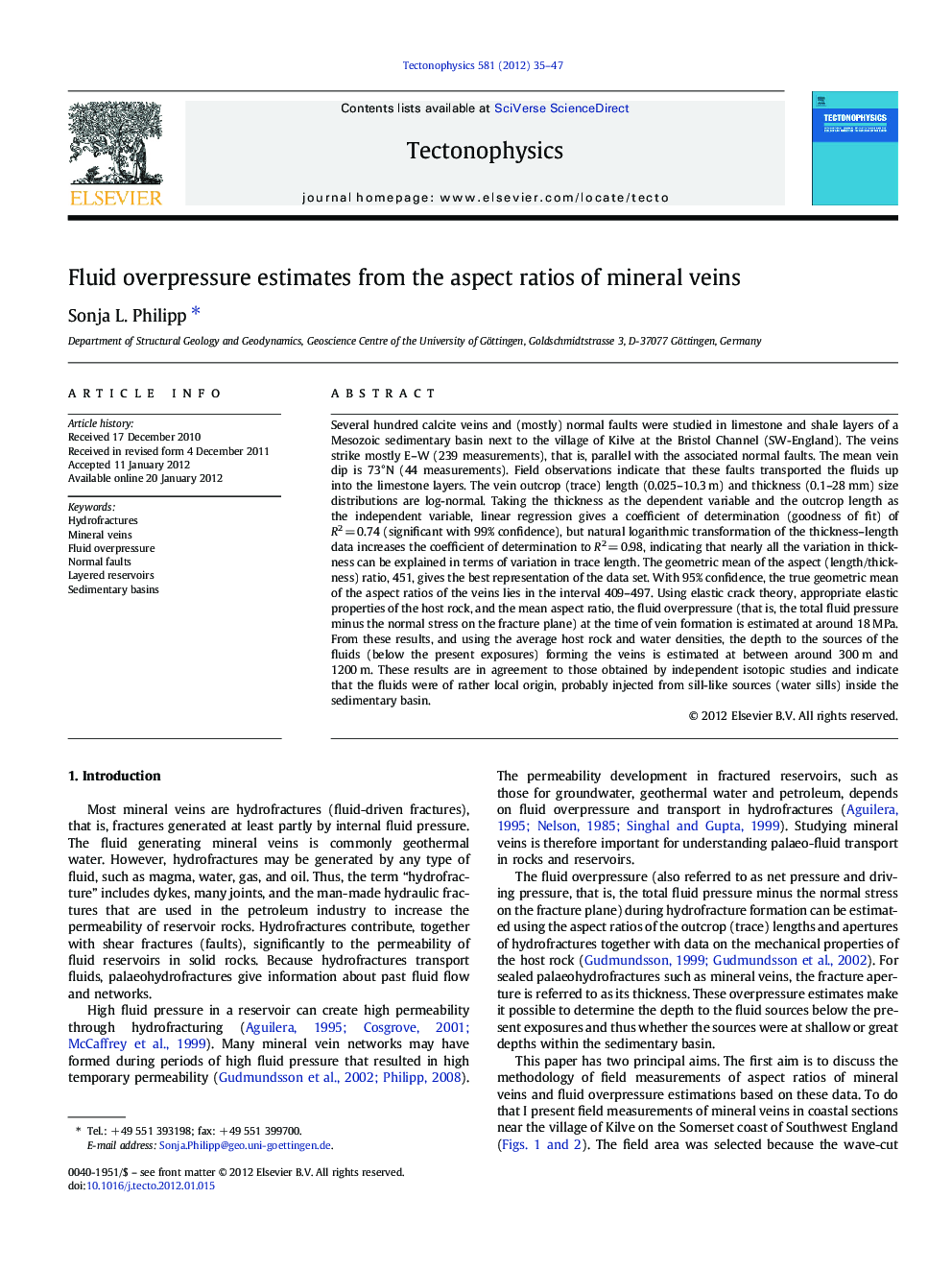| Article ID | Journal | Published Year | Pages | File Type |
|---|---|---|---|---|
| 4692588 | Tectonophysics | 2012 | 13 Pages |
Several hundred calcite veins and (mostly) normal faults were studied in limestone and shale layers of a Mesozoic sedimentary basin next to the village of Kilve at the Bristol Channel (SW-England). The veins strike mostly E–W (239 measurements), that is, parallel with the associated normal faults. The mean vein dip is 73°N (44 measurements). Field observations indicate that these faults transported the fluids up into the limestone layers. The vein outcrop (trace) length (0.025–10.3 m) and thickness (0.1–28 mm) size distributions are log-normal. Taking the thickness as the dependent variable and the outcrop length as the independent variable, linear regression gives a coefficient of determination (goodness of fit) of R2 = 0.74 (significant with 99% confidence), but natural logarithmic transformation of the thickness–length data increases the coefficient of determination to R2 = 0.98, indicating that nearly all the variation in thickness can be explained in terms of variation in trace length. The geometric mean of the aspect (length/thickness) ratio, 451, gives the best representation of the data set. With 95% confidence, the true geometric mean of the aspect ratios of the veins lies in the interval 409–497. Using elastic crack theory, appropriate elastic properties of the host rock, and the mean aspect ratio, the fluid overpressure (that is, the total fluid pressure minus the normal stress on the fracture plane) at the time of vein formation is estimated at around 18 MPa. From these results, and using the average host rock and water densities, the depth to the sources of the fluids (below the present exposures) forming the veins is estimated at between around 300 m and 1200 m. These results are in agreement to those obtained by independent isotopic studies and indicate that the fluids were of rather local origin, probably injected from sill-like sources (water sills) inside the sedimentary basin.
Graphical abstractFigure optionsDownload full-size imageDownload as PowerPoint slideHighlights► Aspect (length/thickness) ratios of 239 calcite veins were measured in limestone layers near Kilve (Bristol Channel). ► The geometric mean as representative aspect ratio allows estimates of the fluid overpressure during vein formation. ► Using analytical models and appropriate host rock elastic moduli this fluid overpressure was calculated as around 18 MPa. ► From this the depth to the fluid sources (water sills) was estimated as several hundred metres below the present exposures. ► Vein forming water was flowing up along the cores of normal faults into the limestone layers where most of the veins occur.
